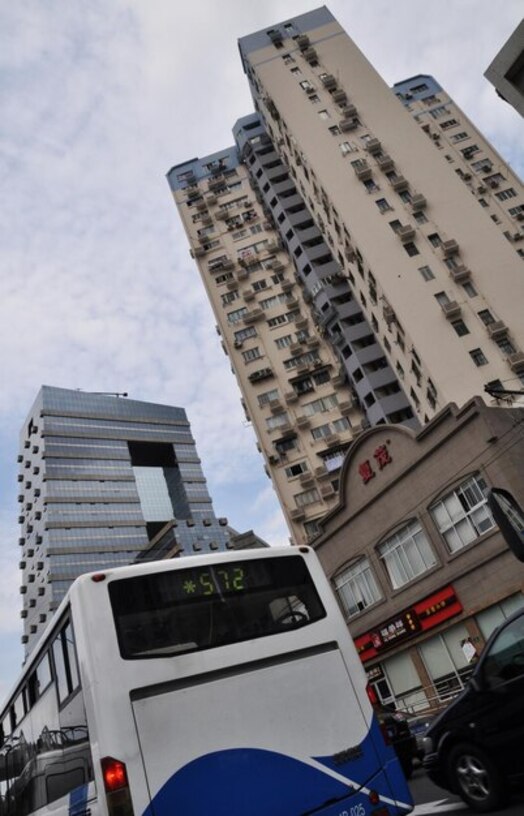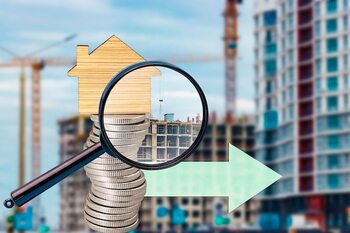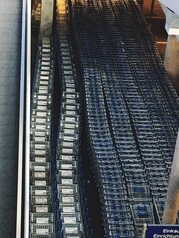The influence of public transportation on your home's value

Proximity to public transportation not only enhances quality of life but also plays a crucial role in your home's value. In a world where mobility has become essential, homes near bus and train stations tend to experience significant appreciation. In this article, we will explore how access to public transportation can transform your property into an attractive investment. Discover why considering this variable is fundamental to maximizing your home's value.
1. The impact of public transportation on real estate demand
Public transportation not only facilitates the mobility of residents but also acts as a catalyst for community growth. Areas well-connected by buses, trains, and subways tend to attract a larger number of people seeking housing, which in turn increases real estate demand. This phenomenon results in more intense competition for properties located near these infrastructures, driving up their prices and creating a perception of higher value among potential buyers. In this sense, access to public transportation becomes a decisive factor for those seeking convenience and efficiency in their lifestyle.
In addition to the increase in demand, the presence of an effective public transportation system can contribute to the stability and sustainability of the local real estate market. Areas with good connections tend to experience fewer fluctuations in prices, as there is always a constant interest from tenants and buyers. This is especially relevant in times of economic uncertainty; properties near public transportation often maintain their value better than those located in less accessible areas. Therefore, investing in a home close to stations or stops can be not only a practical decision to improve your quality of life but also a smart strategy to secure your assets in the long term.
2. How access to transportation increases land value
Access to public transportation is a determining factor in property valuation, as it facilitates the mobility and daily commuting of its residents. People are increasingly seeking locations that offer quick and efficient connections to their workplaces, schools, and basic services. This demand for well-connected housing has led to a rise in interest in properties near metro stations, bus stops, or trams, which translates into a higher added value. With accessible transportation options, properties are not only more attractive to tenants but also to future buyers who value the convenience that this access provides.
Additionally, the development of public transport infrastructure is often accompanied by improvements in the surrounding area, such as new shops, restaurants, and recreational spaces. This type of urban revitalization not only enhances the quality of life for current residents but also elevates the overall appeal of the neighborhood. As more people move into these areas due to their connectivity and improved amenities, property prices tend to increase. Therefore, investing in a property near public transport not only ensures a comfortable and convenient home but also represents a smart strategy for maximizing your long-term investment.
3. Comparison between areas with and without public transportation
The comparison between areas with and without public transport reveals notable differences in property values. In areas where access to train stations, buses, or metros is easy and convenient, housing prices tend to be higher. This is because proximity to transport not only facilitates daily mobility for residents but also attracts potential buyers and tenants who value this advantage. Young families, professionals, and seniors often prioritize these locations for their ability to quickly connect them to workplaces, schools, and essential services.
On the other hand, areas lacking public transportation options face significant challenges regarding real estate market demand. The lack of accessibility can make these properties less attractive to buyers, resulting in depreciation of value over time. Additionally, living in an area without adequate public transportation can limit job and social opportunities, negatively impacting the quality of life of its residents. Therefore, when evaluating a property or considering a real estate investment, it is vital to take into account not only the physical condition of the home but also its location concerning the available public transportation system.
4. Case studies: neighborhoods that have grown thanks to transportation
A clear example of the positive impact of public transportation on property values can be observed in neighborhoods like Williamsburg in Brooklyn, New York. This area, which was once an overlooked industrial zone, has experienced exponential growth thanks to the expansion of the subway and the improvement of bus connections. The arrival of new transportation lines not only facilitated mobility to Manhattan but also attracted young professionals and families seeking affordable housing. As a result, real estate prices skyrocketed, turning Williamsburg into one of the most desirable and expensive neighborhoods in the city. This case illustrates how an investment in transportation infrastructure can completely transform the economic and social profile of a community.
Another notable example is the development of the area around the DART (Dallas Area Rapid Transit) light rail in Dallas, Texas. Initiatives to improve access to public transportation have revitalized previously marginalized areas and encouraged the construction of multifamily housing and local businesses. With each new station opened, not only does accessibility for residents increase, but interest in these properties among buyers and investors also rises. This has contributed to a sustainable increase in real estate values, demonstrating how a good transportation system can be a catalyst for urban growth and a powerful tool to maximize your home's value.
5. The connection between mobility and quality of life
Mobility is a determining factor in the quality of life of the inhabitants of a city. When there is easy and quick access to public transportation, the time that people spend on commuting is reduced, allowing them to enjoy more of their leisure time and improve their overall well-being. Families can access essential services such as schools, hospitals, and shopping centers without the need to rely solely on the car. This ease not only promotes a healthier and more active lifestyle but also fosters a sense of community by facilitating social interactions among neighbors.
Moreover, the connection between mobility and quality of life directly impacts the perception of real estate value. Properties located near public transport lines tend to be more sought after by buyers and renters, as they offer a viable alternative to urban traffic and the costs associated with car use. This increase in demand can translate into a significant rise in property value over time. In summary, considering access to public transport not only enhances our daily quality of life but also represents a smart strategy to maximize the long-term economic value of our investment in real estate.
6. What are buyers looking for? The importance of nearby transportation.
The search for an ideal home goes beyond interior features and exterior design; location and access to nearby services are determining factors for many buyers. Among these services, public transportation stands out as one of the most important priorities. People looking to purchase a home greatly value the ability to move around easily, whether to go to work, take the kids to school, or enjoy recreational activities. A home located near train stations or bus stops not only facilitates daily mobility but also offers peace of mind and convenience, which translates into a greater appeal for potential buyers.
Additionally, the presence of public transportation nearby can positively influence the perception of the neighborhood. Buyers often associate areas with good access to transportation with a dynamic and accessible lifestyle; this creates a constant demand for properties in such locations. As a result, homes close to these infrastructures tend to maintain their value and may even experience significant increases in appreciation over time. Therefore, if you are considering selling your property or simply wish to maximize its future value, paying attention to this aspect of the environment can be key to attracting a greater number of interested parties and securing a solid investment.
7. Sustainable transport: an additional appeal for buyers
Sustainable transportation has become an additional attraction for homebuyers, especially in a context where environmental awareness is on the rise. Properties located near public transportation options that promote sustainability, such as electric buses or light rail systems, are not only more accessible but also aligned with an eco-friendly lifestyle. Potential buyers increasingly value initiatives that reduce carbon footprints and foster a healthy urban environment, making these properties even more desirable. This approach not only benefits those looking for a new home but also elevates the neighborhood's profile and can result in sustained appreciation. Moreover, sustainable transportation helps create more cohesive and vibrant communities. When homes are connected by efficient and environmentally friendly public transportation networks, greater social interaction is encouraged, and access to essential services such as shops, schools, and recreational centers is facilitated. This generates a sense of belonging among residents and attracts young families and individuals who prioritize their quality of life. Therefore, investing in properties close to sustainable transportation is not only a smart financial decision; it is also an investment in the future of the neighborhood and its community.
8. Future projections: expansion of transportation and its effect on prices
The expansion of public transportation is presented as a determining factor in the dynamics of the real estate market. As cities grow and evolve, investment in transportation infrastructure becomes a priority for local and regional governments. This expansion not only facilitates the movement of citizens but also acts as a catalyst for urban development. Areas that receive new subway lines or bus routes tend to experience a significant increase in housing demand, which in turn raises the prices of nearby properties. This phenomenon is especially evident in areas where there was previously limited accessibility to transportation, transforming these areas into genuine hubs of attraction.
A crucial aspect to consider is how this expansion may influence future expectations about real estate value. Public perception regarding the convenience of public transportation is fundamental; buyers are often willing to pay more for properties that offer easy access to these networks. Additionally, the creation of new stations frequently accompanies the development of additional services, such as shops and recreational spaces, which further increases the area's appeal. Consequently, investing in homes near transportation expansion projects can be a smart strategy for those looking to maximize their home's value and ensure sustained appreciation over time.
9. Strategies to increase your home's value through transportation access improvements
To increase the value of your home through transportation access improvements, an effective strategy is to invest in the creation of alternative transport routes. This can include the implementation of bike-sharing services or the promotion of electric scooter use that facilitate commuting to the nearest train or bus stations. By encouraging sustainable and accessible transportation options, not only is the connection to the rest of the city improved, but it also adds appeal to the property for potential buyers who value these amenities.
Additionally, consider establishing collaborations with local companies to improve public transportation services in your area. This may involve advocating for extended hours, more frequent routes, or even new stops that bring residents closer to key points like shopping centers or work areas. By working together with local entities, you can help create a more favorable environment that benefits not only your home but also the neighborhood as a whole. These improvements can be a deciding factor for those looking to buy a home and are willing to pay a premium for efficient and convenient access to public transportation.
10. Tips for assessing the potential of public transportation in your area
Evaluating the potential of public transportation in your area is essential for understanding how it can affect your home's value. Start by researching the availability and frequency of transportation services, as higher frequency of routes and wider schedules are often positive indicators. It is also important to consider the variety of options available, such as buses, trains, or trams; each brings different advantages to the connectivity of your neighborhood. Don't forget to pay attention to future investments in public infrastructure, as planned projects can significantly increase the appeal and value of a property.
Also, consider the accessibility of public transportation from your home. Proximity to stations not only enhances daily convenience but can also influence the overall perception of the neighborhood. An area well-connected with efficient transportation systems tends to be more attractive to both buyers and renters. Finally, research how public transportation access in your area compares to nearby areas; this will give you a clear perspective on its competitive potential and help you make informed decisions about your real estate investment.



